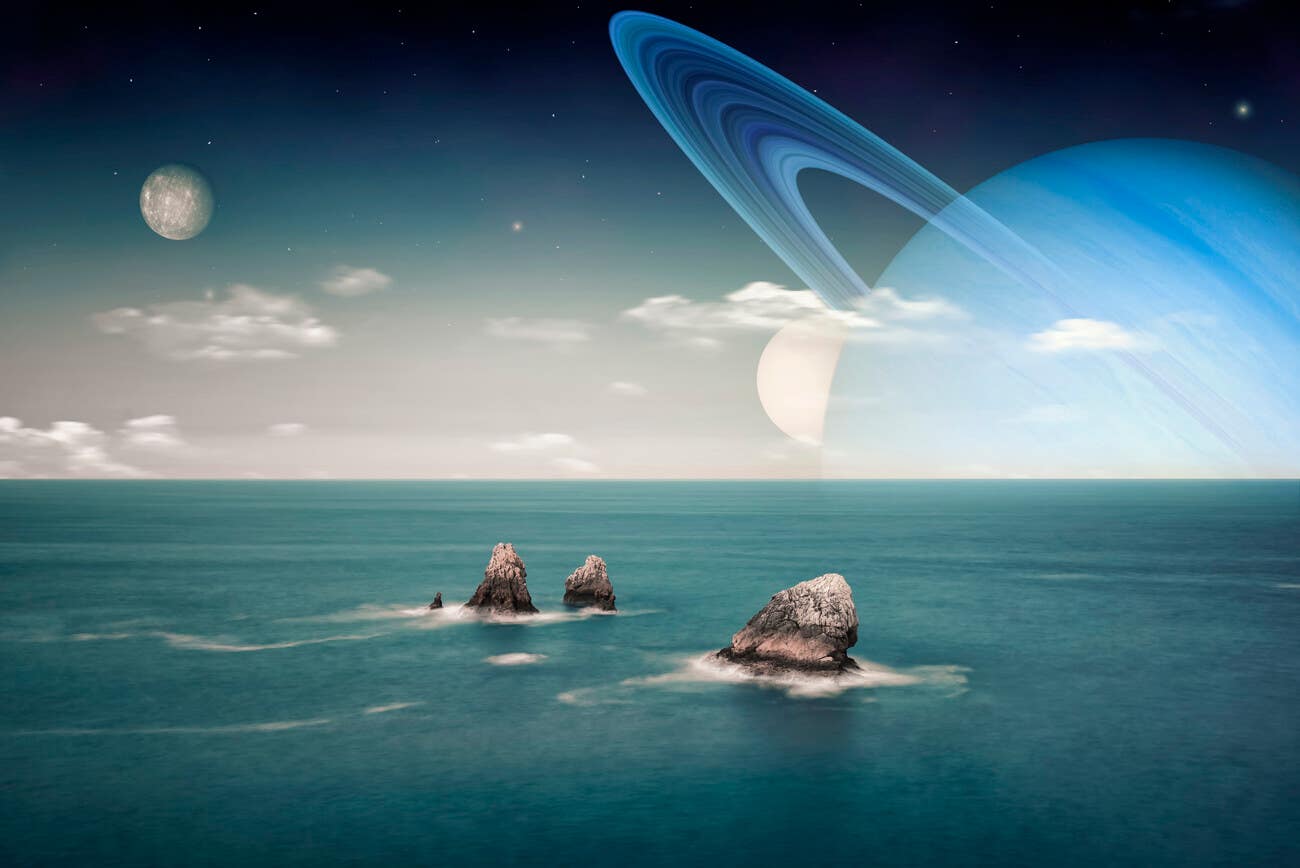New discovery revolutionizes our ability to detect planets capable of supporting life
Habitability is a concept of paramount importance in astronomy, signifying a celestial body’s capacity to host and maintain liquid water.

[Dec. 30, 2023: JD Shavit, The Brighter Side of News]
The results of the research not only show that the Earth was created much faster than previously thought, but that the presence of water is a predicted outcome of its formation process. (CREDIT: Daampjeee is licensed under CC BY-SA 4.0)
In a groundbreaking development in the quest to uncover habitable planets beyond our solar system, scientists have devised a novel method that compares the levels of carbon dioxide (CO2) in the atmospheres of distant planets to those of their neighboring celestial bodies.
This pioneering technique, introduced by an international team of researchers hailing from the University of Birmingham (UK), the Massachusetts Institute of Technology (MIT) in the United States, and other prominent institutions, could revolutionize our ability to detect planets capable of supporting life.
The researchers' findings, which offer a new glimpse into the potential habitability of exoplanets, have been published in the prestigious journal Nature Astronomy.
Decoding Habitability: Liquid Water as the Key
Habitability is a concept of paramount importance in astronomy, signifying a celestial body's capacity to host and maintain liquid water on its surface. Planets situated too close to their parent stars become unbearably hot, as exemplified by Venus, while those residing too far away, like Mars, succumb to extreme cold.
Related Stories
In the midst of this cosmic balancing act lies the "habitable zone," often affectionately referred to as the Goldilocks zone, where conditions are just right for liquid water to exist.
Despite extensive efforts to identify exoplanets located within the theoretical habitable zones of their stars, a critical question has remained unanswered until now: Do these planets genuinely possess liquid water? While the scientific community has made considerable strides in establishing biosignatures, chemical markers indicative of biological processes, there has been a glaring absence of practical techniques for confirming habitability, the crucial factor in discerning the presence of liquid water.
The Birth of a 'Habitability Signature'
The researchers behind this groundbreaking study have introduced a revolutionary "habitability signature." This signature has the power to determine whether a planet indeed harbors liquid water—a significant breakthrough in our ongoing exploration of the cosmos. Prior to this innovation, the closest scientists came to identifying liquid on the surface of a distant planet was through the detection of its glint, the phenomenon in which starlight reflects off water. However, this glint-based signature proved too feeble for current observatories to detect effectively. The newly devised method, on the other hand, can be readily applied using existing astronomical facilities.
Illustration of our strategy to detect habitable exoplanetary environment via CO2 depletion. (CREDIT: Nature Astronomy)
Amaury Triaud, Professor of Exoplanetology at the University of Birmingham and co-leader of the research team, elucidates the significance of their discovery, stating, "It is fairly easy to measure the amount of carbon dioxide in a planet's atmosphere. This is because CO2 is a strong absorber in the infrared, the same property causing the current rise in global temperatures here on Earth.
By comparing the amount of CO2 in different planets' atmospheres, we can use this new habitability signature to identify those planets with oceans, which make them more likely to be able to support life. For example, we know that initially, the Earth's atmosphere used to be mostly CO2, but then the carbon dissolved into the ocean and made the planet able to support life for the last four billion years or so."
CO2 depletion as a signature of liquid water and/or life. (CREDIT: Nature Astronomy)
In addition to its implications for identifying habitable planets, this research provides valuable insights into environmental tipping points. Amaury Triaud explains further, "By examining the levels of CO2 in other planets' atmospheres, we can empirically measure habitability and compare it to our theoretical expectations.
This helps gather context for the climate crisis we face on Earth to find out at which point the levels of carbon make a planet uninhabitable. For example, Venus and Earth look incredibly similar, but there is a very high level of carbon in Venus' atmosphere. There may have been a past climatic tipping point that led to Venus becoming uninhabitable."
A Dual Role: From Habitability to Biosignatures
The newfound method not only serves as a signature for habitability but also functions as a biosignature, as biology itself captures carbon dioxide. Dr. Julien de Wit, Assistant Professor of Planetary Sciences at MIT and co-leader of the study, highlights this dual role, remarking, "Life on Earth accounts for 20% of the total amount of captured CO2, with the rest mainly being absorbed by the oceans.
On another planet, this number could be much larger. One of the tell-tale signs of carbon consumption by biology is the emission of oxygen. Oxygen can transform into ozone, and it turns out ozone has a detectable signature right next to CO2. So, observing both carbon dioxide and ozone at once can inform us about habitability, but also about the presence of life on that planet."
What sets this research apart is that the signatures it seeks are detectable with current telescopes, defying earlier pessimistic expectations. Julien de Wit concludes, "Despite much early hopes, most of our colleagues had eventually come to the conclusion that major telescopes like the JWST would not be able to detect life on exoplanets. Our work brings new hope. By leveraging the signature of carbon dioxide, not only can we infer the presence of liquid water on a faraway planet, but it also provides a path to identify life itself."
Optimum wavelength range for transmission spectroscopy considering the effects of hazes and stellar contamination. (CREDIT: Nature Astronomy)
The next phase for the research team involves the task of determining the atmospheric compositions of carbon dioxide on a variety of exoplanets. This crucial step will enable them to identify which of these distant worlds harbor oceans on their surfaces, facilitating more focused and precise observations.
These observations, in turn, may hold the key to discovering planets capable of supporting life, bringing us one step closer to unraveling the mysteries of the universe and potentially identifying habitable worlds beyond our wildest dreams.
Note: Materials provided above by University of Copenhagen. Content may be edited for style and length.
Like these kind of feel good stories? Get the Brighter Side of News' newsletter.
Joshua Shavit
Science & Technology Writer | AI and Robotics Reporter
Joshua Shavit is a Los Angeles-based science and technology writer with a passion for exploring the breakthroughs shaping the future. As a contributor to The Brighter Side of News, he focuses on positive and transformative advancements in AI, technology, physics, engineering, robotics and space science. Joshua is currently working towards a Bachelor of Science in Business Administration at the University of California, Berkeley. He combines his academic background with a talent for storytelling, making complex scientific discoveries engaging and accessible. His work highlights the innovators behind the ideas, bringing readers closer to the people driving progress.



